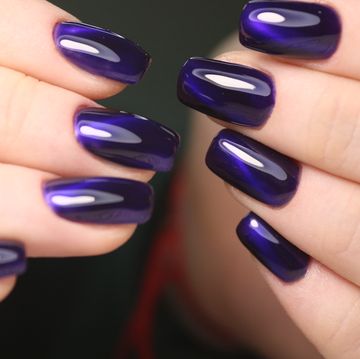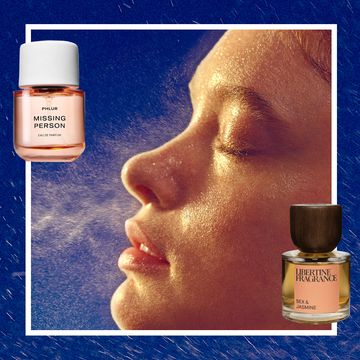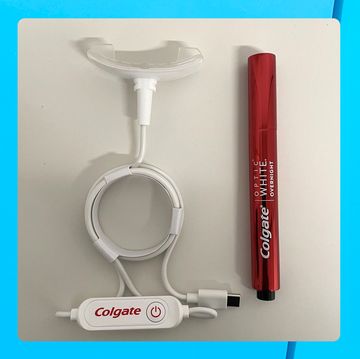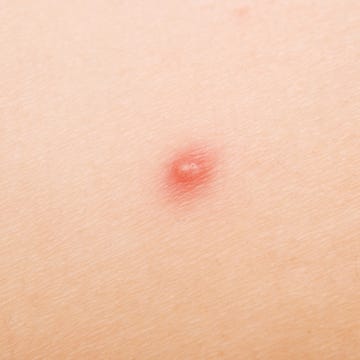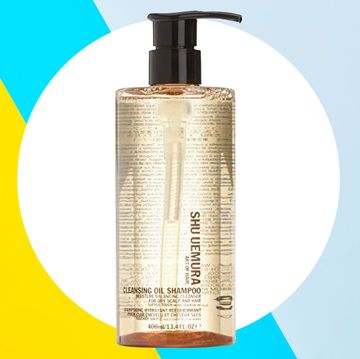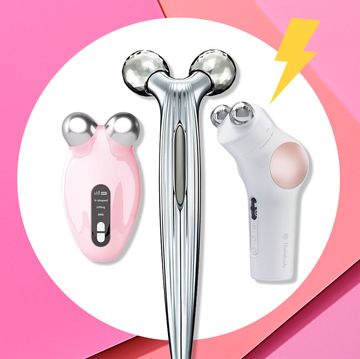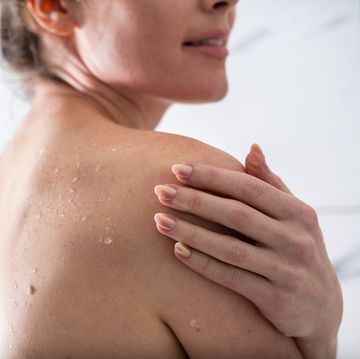Nail trends are always changing, and these days, a trip to the nail salon will reveal that there are tons of manicures that you can experiment with. Last year, for example, gel extensions became all the rage, though recently, structured gel manicures have been taking over.
Meet Our Experts: Anastasia Totty, nail technician and LECHAT Nails brand educator, Aaliyah Smith, celebrity nail artist and founder of NailBiz, Julie Kandalec, celebrity manicurist and founder of Julie K Nail Academy
Not to be confused with a standard gel manicure, where gel polish is applied to the natural nail and cured with a UV or LED light to prevent chipping, a structured gel manicure uses "a soft gel that's used for the enhancing of the nail, which is a lot more flexible. It looks more natural, and you don't really need to use any products that require fills," says Anastasia Totty, a nail technician and LECHAT Nails brand educator.
If you're curious to know more details behind this upcoming nail trend, keep reading.
What is a structured gel manicure?
It might sound complicated, but a structured gel manicure is a lot simpler than it sounds. For the clear-cut definition: it's a type of manicure that uses a soft or hard gel to build up your natural nail to make it stronger and thicker before applying polish. The builder gel keeps your nails from breaking as easily, which is helpful if growing your nails out past tip length (and not having to deal with hangnails) is your ultimate goal.
A standard gel manicure consists of applying gel polish directly to your natural nail, but gel polish can chip because it's only as strong as the base under it, says Julie Kandalec, a celebrity manicurist and founder of Julie K Nail Academy. "If you have the structured gel underneath the gel polish, it's going to last the whole time because it's on a stronger base," she says.
Additionally, structured gel manicures are super fitting for people with busy lifestyles since they tend to last longer than acyrlic nails and gel powder manicures, says Kandalec. "Anyone that's hard on their nails from lifting or typing, [or] if anyone doesn't have time for all these appointments every two weeks, structure manicures are great for them," she adds.
How is this different from getting acrylic nails?
Acrylics may be a more traditional way of enhancing your natural nails, but the soft gel used in a structured gel manicure has its perks. "Once the soft gel is cured, it doesn't respond to the elements as much—it doesn't shrink or expand. It adheres to the nail, it's flexible, and it absorbs any shock," Totty explains. "So it's a lot easier to keep your natural nail from breaking or cracking."
Additionally, acrylic sets are done using entirely different ingredients. "Acrylic is done with polymer (a powder) and monomer (a liquid). Meanwhile, a gel manicure only consists of gel," adds Aaliyah Smith, celebrity nail artist and founder of NailBiz.
What is it like to get a structured gel manicure?
When you first go to the salon for a structured gel manicure, your nail technician will start by removing any polish from the nail and applying a gel cleanser to clean the surface.
Afterward, they'll lightly file or buff the nail, push the cuticle back, and gently remove all shine from the nail, and follow that with a primer. "The primer is like a two-sided glue that helps whatever product being used adhere to your nail," says Smith. Once applied, the primer is usually cured under a lamp.
With the primer on and ready, gel is applied and formed to the desired nail shape until your nail has thickened. "Your base level is usually clear, gel, or nude. Then, you go over it with your color and nail art, if desired," says Kandalec. "It's cured at each layer, finished with a top coat, and you're done." Some artists will also apply cuticle oil or do a small massage at the end. The whole process will take up to two hours, depending on your request.
How long do structured gel manicures typically last?
With most nail styles, getting your nails done every two weeks is the standard. However, Totty, Kandalec, and Smith agree that you can keep a structured gel manicure for two to four weeks.
"It depends on the person's lifestyle," says Smith. She adds that people who are heavy on their nails daily (through typing or lifting, for example) should opt for an oval shape. This will help you maintain your manicure and prevent nail breakage—you'll also be protecting your shape and length.
But if oval-shaped nails aren't your thing, just know that cuticle oil is your best friend. "[The oil] should go on top and under the free edge of the nail because it hydrates the natural nail growing underneath, and it'll prevent it from curling away from the enhancement," says Kandalec.
How is structured gel removed?
Removing a structure gel manicure can be done in two ways, depending on the gel that was used. Soft gel is removed by the soaking method. For example, Smith prefers soaking her clients' fingers in a glass bowl of acetone that has been warmed up for 10 seconds. She also applies a towel over the bowl since the fumes can be overwhelming. From there, your nail tech will use a cuticle pusher or scrapper to remove the remaining polish.
Hard gel, on the other hand, can only be removed with an e-filler or buffer. Some nail technicians only prefer working with soft gel to avoid having to file the nail down and cause potential damage. Others only work with hard gel. "You only have to file it off one time, not over and over and over again, which is going to cause damage. Once is fine," says Kandalec.
How much does a structured gel manicure typically cost?
This mostly depends on your location, as a salon in a big city might charge way more than a salon in a smaller, less populated city. You may also be charged differently depending on your nail technician's level of experience, the length of your nails, or the pattern or design you choose. All that said, the cost of a structured gel manicure can range anywhere from $40 to over $100.

Sabrina is an editorial assistant for Women’s Health. When she’s not writing, you can find her running, training in mixed martial arts, or reading.


